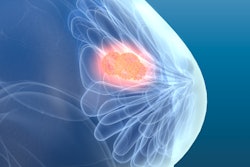Dear Women's Imaging Insider,
Growing evidence shows that digital breast tomosynthesis (DBT) can bring many benefits, but an important potential downside is reader fatigue due to lengthy reporting times.
A U.K. team has taken a close look at this topic and concluded that radiologists blink much more often after examining 20 DBT cases. The group suggests that taking a break after 20 reports can help to eliminate mistakes. Don't miss our news report posted today.
Meanwhile, a new multicenter study involving 166 women has found that image-guided biopsies performed after breast cancer patients have been treated with neoadjuvant chemotherapy can predict the presence of residual cancer, potentially avoiding the need for surgery.
Women's attitudes toward artificial intelligence (AI) have also come under scrutiny this month. Most respondents in a recent Dutch survey indicated they weren't comfortable yet with only a deep-learning algorithm interpreting their screening mammograms. Instead, they would prefer AI to be used as a second reader.
The European Breast Cancer Conference took place recently, and four presentations caught our attention:
- A report from Spain found that not all benign findings on screening mammography are equal. The authors identified two characteristics of benign lesions that signal an increased risk of future malignancy.
- A Dutch-led analysis used CT scans of coronary artery calcium to predict which patients undergoing treatment for breast cancer are at a greater risk of developing cardiovascular disease.
- A panel of Dutch and Italian researchers highlighted the negative effect of the COVID-19 pandemic on breast cancer care.
- An investigation discovered that breast cancers detected in the interval between national screening program mammograms have a worse prognosis than those detected at the time of a screening, even if they have the same biology.
These articles make up just part of our Women's Imaging Community reporting. Be sure to check in regularly for current women's imaging news and research developments.




















